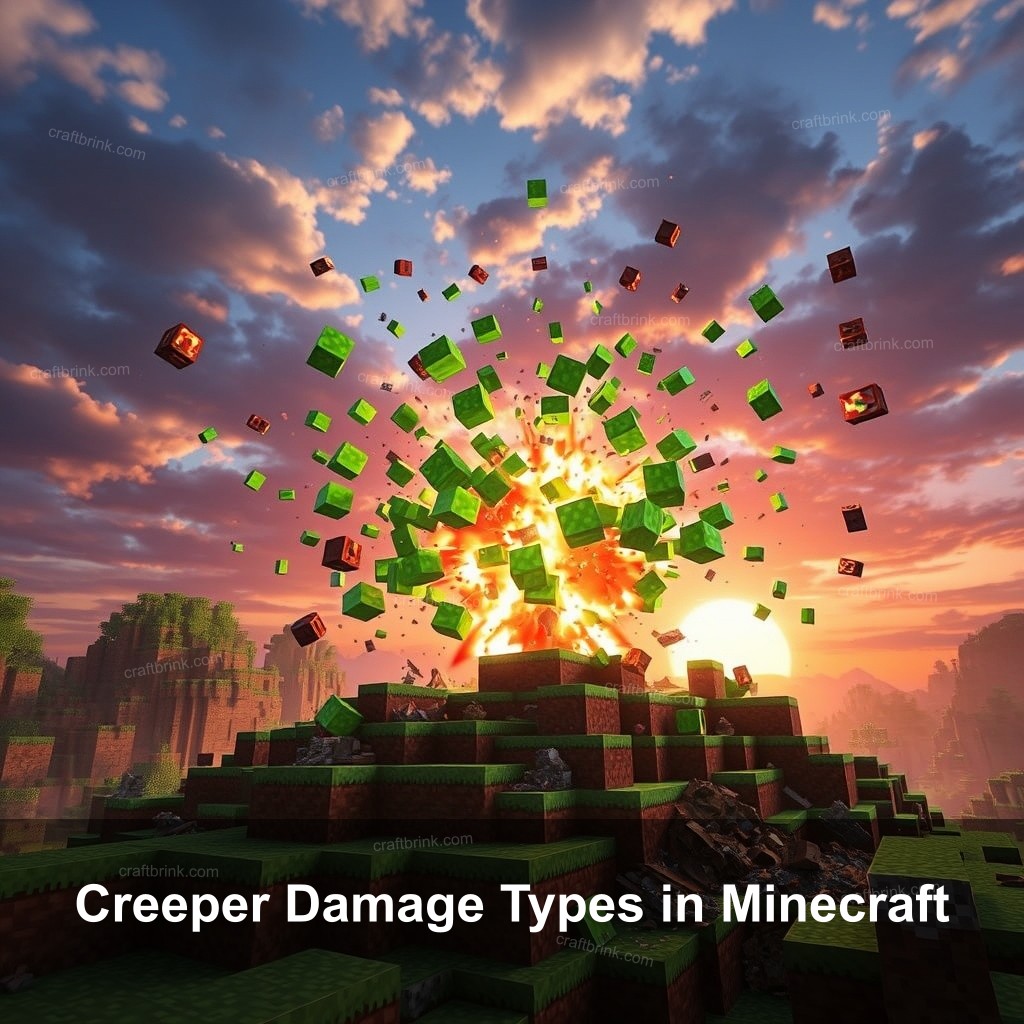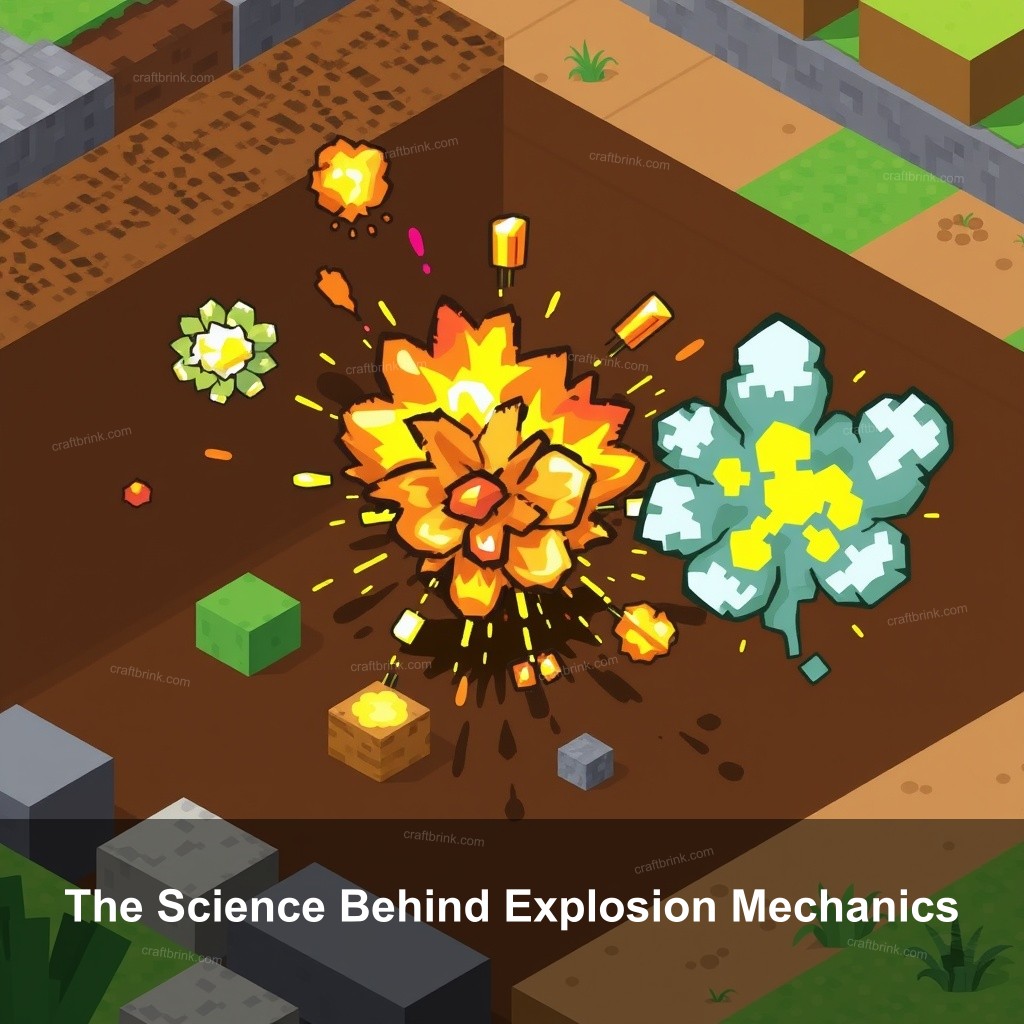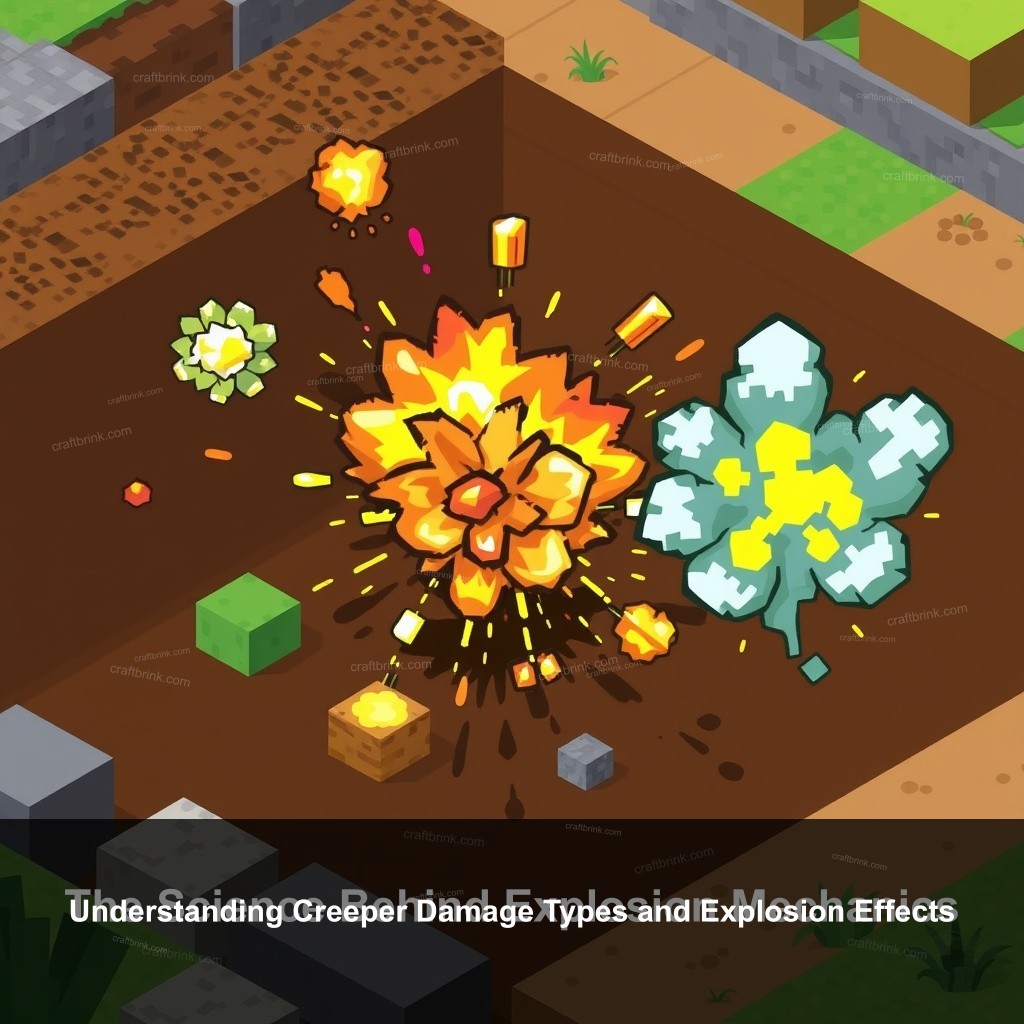Did you know that creepers are not just the silent threat lurking in the dark but also a significant aspect of gameplay in Minecraft? In this article, we’ll uncover the various creeper damage types and the explosion effects they bring to the game. From understanding how damage is calculated from creeper explosions to exploring the broader impacts on the environment, prepare to explore the world of Minecraft’s most infamous mob. Join us as we unravel everything you need to know about creepers, courtesy of CraftBrink.

Creeper Damage Types in Minecraft
The world of Minecraft is filled with surprises, and creepers are among the most enigmatic mobs you’ll encounter. They may look harmless, but don’t be fooled by their cute pixelated faces! Let’s get into the different types of damage they deal.
Understanding Creeper Explosion Damage
Understanding the mechanics behind creeper explosions is crucial for any Minecraft player. Creepers have a unique approach to dealing damage, relying on their stealthy nature to sneak up on unsuspecting players.
Creeper explosions can cause various types of damage. The first and most obvious is direct damage to players. If you find yourself too close when a creeper detonates, it can inflict significant harm. The amount of damage depends on several factors, including the proximity of the player to the explosion and any armor worn. A player in full diamond armor, for instance, might survive a blast with minimal health loss. However, without any armor, a direct hit could be fatal.
But how is this damage calculated? The game uses a specific formula based on the player’s distance from the blast. Players standing right next to a creeper will feel the full force of the explosion—around 49 damage points on Normal difficulty. As you step back, this damage decreases significantly. Interestingly, the game difficulty also plays a role. On Hard mode, the same explosion might deal up to 73 damage points, so watch out!
Here’s a look at how damage is calculated:
| Distance from Explosion | Damage (Normal Mode) | Damage (Hard Mode) |
|---|---|---|
| 0-4 blocks | 49 | 73 |
| 5-7 blocks | 24 | 36 |
| 8-9 blocks | 10 | 15 |
| 10+ blocks | 0 | 0 |
In addition to player damage, creepers also impact the environment. When they explode, they can destroy blocks within a certain radius. This destruction can reshuffle the landscape, leaving craters that can alter your surroundings. Players often find themselves tasked with repairing damage caused by these sneaky mobs, especially when they go off near their builds. For those interested in more details about explosions, check out our guide on Understanding Creeper Explosion Mechanics.
Environmental Effects of Creeper Explosions
Now that we’ve covered damage to players, let’s discuss the environmental effects. Creeper explosions don’t just affect players; they can change the area around them.
One of the first impacts is the removal of blocks. When a creeper explodes, it destroys nearby blocks, which can include anything from dirt and grass to stone. This destruction can lead to noticeable changes in the terrain. If you’re building a fortress or a home, a nearby creeper can undo hours of hard work in seconds!
Moreover, these explosions can have lasting effects on the environment. For instance, if a creeper detonates in a forest, it can clear out a large area of trees and foliage. This not only changes the immediate area but can also affect the spawning rates of other mobs. Less foliage means fewer hiding spots for passive animals, altering the ecosystem.
Lastly, creeper explosions can lead to chain reactions. If a creeper explodes near other mobs, it may cause them to become hostile or even lead to more explosions if other creepers are nearby. The ripple effect can create chaos, turning a simple encounter into a full-blown disaster. This is something every player should consider when building near potential spawn points for creepers.
Strategies for Surviving Creeper Attacks
So, how can you protect yourself from these explosive threats? Here are some effective strategies to help you stay safe in the world of Minecraft.
Defensive Measures Against Creepers
Using the right armor and enchantments can significantly mitigate damage from creepers. Blast Protection is an enchantment that can be applied to armor, decreasing the damage taken from explosions. This means that if you find yourself in close proximity to a creeper, your armor may save you from a devastating blow. In fact, players equipped with full blast protection can reduce damage by up to 66%, making survival much more manageable.
Another strategy is to build defensive structures around your base. Walls, moats, or even traps can deter creepers from getting too close. Using materials that are blast-resistant, like cobblestone or obsidian, can also help protect your valuable structures.
Finally, consider using pets to your advantage. Cats and ocelots have a unique ability to scare away creepers, making them an excellent addition to your home. If you keep a few around, they can alert you to the presence of sneaky creepers, giving you a heads-up before it’s too late. For more detailed tips, check out our Ultimate Tutorial on Defeating Minecraft Creepers.

The Science Behind Explosion Mechanics
Understanding how explosions work in Minecraft can give players a tactical advantage. Let’s break down the science behind it.
How Explosions Work in Minecraft
Explosions in Minecraft follow specific mechanics that dictate how they behave in the game. The key elements include explosion radius, damage types, and block destruction.
The explosion radius of a creeper is typically three blocks from the point of detonation. This means that any player or block within this radius will be affected. The damage a player receives decreases significantly with distance, allowing players to survive if they can get away quickly.
Interestingly, different explosives in Minecraft have varying effects. For instance, TNT has a larger radius and different damage outputs compared to a creeper. Understanding these differences can help players strategize their encounters with explosions. If you’re interested in more about how explosions behave, see our article on How to Effectively Avoid Minecraft Creepers.
Player Experiences and Community Insights
Players across the Minecraft community have shared their unique experiences with creepers. These anecdotes provide valuable insights into dealing with these mobs.
Anecdotes from Minecraft Players
Many players have stories about their most memorable creeper encounters. One player recalls getting caught in a cave while mining. They were so focused on gathering resources that they didn’t notice a creeper sneaking up behind them. The explosion sent them flying, ruining their precious diamond pickaxe and causing a hilarious, albeit frustrating, moment.
Community tips often revolve around strategies for avoiding creepers. Lighting up dark areas can prevent them from spawning, while building high walls can keep them out of your base. Players recommend keeping a safe distance from areas where creepers are known to spawn, allowing you to manage their presence effectively.
The cultural impact of creepers is also noteworthy. They have become a staple of Minecraft merchandise and fanart, showcasing their iconic status in gaming. For example, a popular meme features a creeper sneaking up on a player, capturing the essence of their stealthy approach.
Future Developments and Updates Related to Creepers
The Minecraft community is always buzzing with speculation about future updates. As the game evolves, creepers may see changes in their behavior and mechanics.
Anticipated Changes in Gameplay Mechanics
Players often discuss potential changes to creeper behavior in future updates. These discussions can include anything from making creepers more challenging to introducing new mechanics like camouflage abilities. Such changes could significantly impact how players approach creepers in gameplay.
Balancing creeper damage with player strategies is also a hot topic. As players become more skilled, the game may need to adapt to ensure that creepers still pose a threat. Feedback from the community will likely influence how these changes unfold.
Lastly, community reactions to past updates provide insight into the direction future changes might take. Players are vocal about their experiences, helping developers make informed decisions about adjustments to gameplay.
FAQ
What are the different types of damage caused by creepers?
Creepers deal damage directly to players and can destroy surrounding blocks when they explode. Damage varies based on factors such as distance from the explosion and the player’s armor.
How can I survive a creeper explosion?
To survive a creeper explosion, players should wear blast protection armor, maintain a safe distance, and build defensive structures. Keeping pets like cats can also help deter creepers.
What are the environmental effects of creeper explosions?
Creeper explosions can remove blocks, alter the area, and affect mob spawning rates. They can create craters and clear areas of vegetation, impacting the surrounding ecosystem.
How is explosion damage calculated in Minecraft?
Explosion damage is calculated based on the proximity of the player to the explosion. Damage decreases with distance and varies depending on the game’s difficulty level.
Can creepers destroy player-built structures?
Yes, creepers can destroy many types of blocks, making them a threat to player-built structures. Using blast-resistant materials can help protect against their explosions.
Conclusion
Creepers are a fascinating aspect of Minecraft, offering challenges and opportunities for players. By learning about their damage types and explosion effects, you can better prepare for encounters. Don’t forget to check out more content on CraftBrink for tips, tricks, and guidelines to improve your Minecraft experience. Visit CraftBrink for additional insights!
